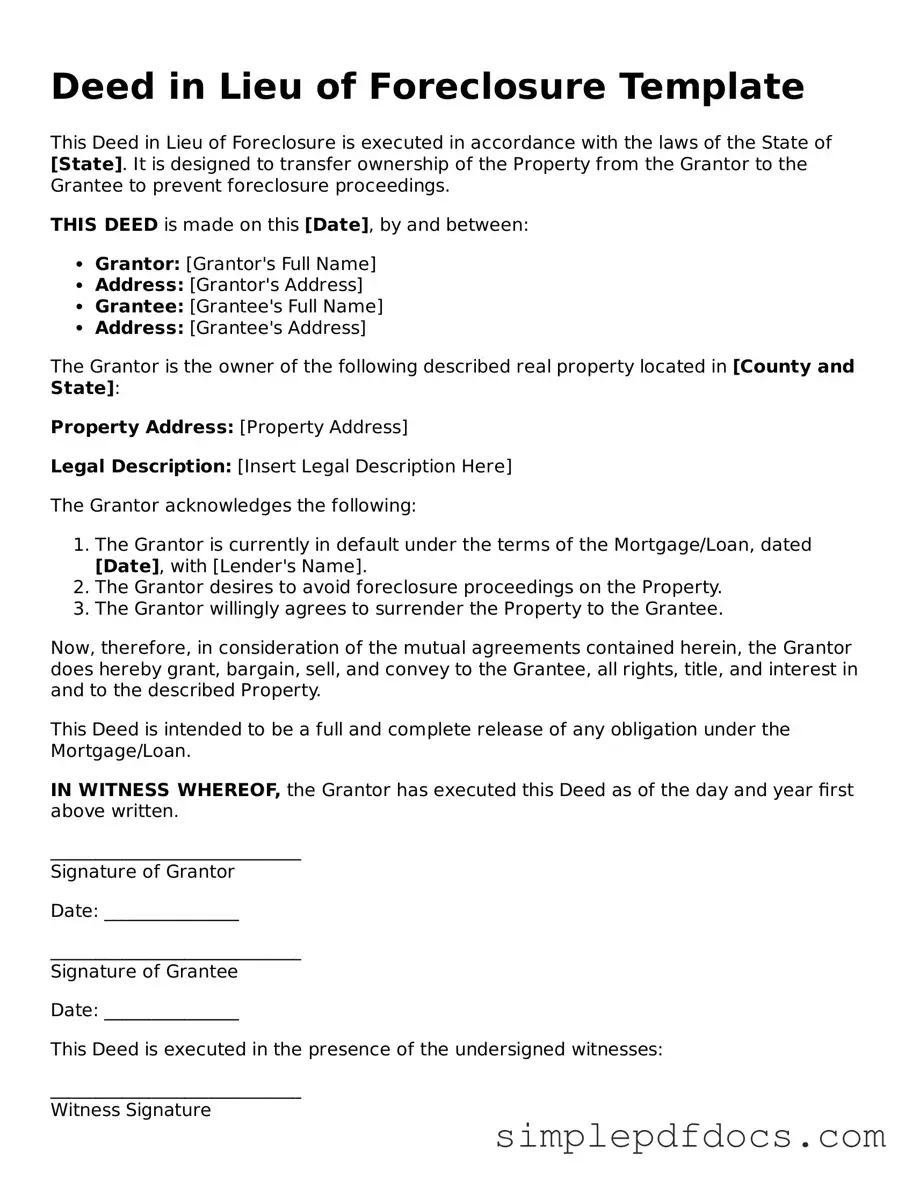Attorney-Approved Deed in Lieu of Foreclosure Form
A Deed in Lieu of Foreclosure is a legal document that allows a homeowner to voluntarily transfer their property to the lender to avoid the lengthy and often stressful foreclosure process. This option can provide a more amicable resolution for both parties, allowing the homeowner to walk away from the mortgage without the negative impact of foreclosure on their credit. Understanding this form can help homeowners make informed decisions during challenging financial times.
Get Document Here
